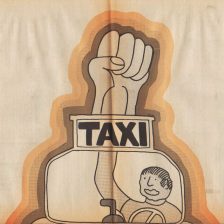Noel Ignatiev & John Garvey
Our initial reaction to the Rachel Dolezal story was: what’s the big deal? America has always been a land of shape shifters, and if she isn’t stopped for ”driving while black” or followed while shopping, and if her sons are not targeted by cops, then how is she different from the politician who is Italian on Columbus Day and Irish on Saint Patrick’s Day?
However, the more we saw the wolves circling around, the more we came to sympathize with her. By way of example, Matt Lauer on The Today Show kept badgering her with the question, “Are you Caucasian?”– ignoring her insistence that it was more complicated than that. We’re inclined to think that judgments about her actions and explanations are mostly a matter for discussion among her immediate family members (specifically, her son and her adopted brother), her friends, perhaps her students at Eastern Washington University and her political associates. This is, as Craig Wilder observed, a “local” story. We’re not going to say much more about our views about Ms. Dolezal but we do want to examine the surrounding social and political contexts. Like others, we have been struck by the extent to which the whole discussion has been reduced to a spectacle and how little of it has been informed by perspectives grounded in history or coherent thinking. It has become commonplace to describe race as socially constructed (although clearly people like Matt Lauer have not yet heard the news). The corollary, usually forgotten, to the claim that race is socially constructed is that it can be socially dissolved.
We’re going to approach the issues from the perspective we developed as the cofounders of Race Traitor: Journal of the New Abolitionism, which was published from 1993 to 2005. Our aim was to abolish the white race, by disrupting the institutions and practices that reproduce it (for example, the criminal justice system, the educational system, the labor market and the healthcare system). To do that, we sought to enlist people nominally classified as white who defied white rules so strenuously that they jeopardized their ability to draw upon the privileges of whiteness—people who might be called race traitors—thereby contributing to the birth of a new community.
We were aware that even those who step out of being white in one situation can hardly avoid stepping back in later, if for no reason other than the assumptions of others (unless, like John Brown, they have the good fortune to be hung before that can happen). Many of the people commonly called whites who feel that the definition does not fit them have been told all their lives that they are crazy; some of them have been made crazy. One of our goals in publishing Race Traitor was to reach out to these dissidents, to let them know they were not alone. We confess that had Rachel Dolezal submitted an account of her life, we probably would have published it—not without reservations. But that’s what politics is about—provisional arguments, not repetitions of the same old ones.
More fundamentally, we were interested in breaking up the white race to establish the basis for working class solidarity. Many years later, we continue to argue that the time-honored “Unite and Fight” approach will lead nowhere. Instead, when it comes to slogans, we prefer: “An injury to one is an injury to all,” or, the same thing in a different idiom: “Remember them that are in bonds as bound with them.” Solidarity premised on the reproduction of inequalities within the working class, with the elimination of those inequalities to come later in “the sweet by and by,” is no solidarity at all.
In retrospect, we believe that RT provided a coherent framework for examining and discussing race. As we acknowledged in an essay published in our next-to-last issue, we could have and should have approached some things differently—perhaps especially about the relationship we saw between the abolition of whiteness and the possibility of an anti-capitalist revolution. But we believe that much of what we wrote remains valuable today.
We emphasized the cross-class character of the white race formation and repeatedly acknowledged that being in the white race did not exempt its working-class members from poverty or misery of all sorts. At the time, we pointed out that the privileges of membership were enough for almost all whites to want to remain members. More than twenty years on, whiteness is not what it used to be, but it ain’t nothing.
We never used, endorsed or promoted identity politics; we railed against multi-culturalism and diversity; we were scornful of those who wanted to preserve the “good aspects” of “white culture” or to rearticulate whiteness. We wanted nothing to do with the growing academic field of “whiteness studies.” We insisted that abolition was the goal of our words and our modest deeds.
Although we were often accused of bashing white people, we actually think that we had more confidence in them than many of those who rush to diminish white workers’ responsibility for the perpetuation of racial oppression. We were partisans of the notion that new forms of consciousness can emerge from the working out of internal contradictions. While we agreed with David Roediger “that whiteness was not merely empty and false, it was nothing but empty and false,” we never thought that thinking of one’s self as white was an all-consuming affair (other than for the white supremacists and “white nationalists”). We knew perfectly well from our own experiences in families, schools, work places and political organizations and movements that whites also identified themselves in many other ways.
We never imagined that white and black were hermetically sealed realities or categories, and published more than a few articles that explored, and took quite different views on, various kinds of crossover phenomena. In that context, we articulated an appreciation for many elements of traditional African-American culture (which we do not regret to this day). An aspect of that traditional culture was the willingness of black communities to welcome white defectors. In spite of the wall between white and black, there have always been so-called whites, thousands of them (usually female), who married black partners, had children with them and lived in the black community (the only place they could live at the time)—without agonizing over their “identity.”
At the same time, we did not want to overestimate the potential of white appreciations of aspects of black culture. We kept in mind Ralph Ellison’s 1977 observation in 1977: “What, by the way, is one to make of a white youngster who, with a transistor radio, screaming a Stevie Wonder tune, glued to his ear, shouts racial epithets at black youngsters trying to swim at a public beach—and this in the name of the ethnic sanctity of what has been declared a neighborhood turf?” (“The Little Man at Choctaw Station”)
We urged our readers and followers to study and learn from central moments of US history: 1) the abolition of slavery and post-Civil War Reconstruction and 2) the modern Civil Rights movement of the 1950s and 1960s. In this regard, we took our lead from CLR James’s argument in 1948:
We say, number one, that the Negro struggle, the independent Negro struggle, has a vitality and a validity of its own; that it has deep historic roots in the past of America and in present struggles; it has an organic political perspective, along which it is travelling, to one degree or another, and everything shows that at the present time it is travelling with great speed and vigour.
We say, number two, that this independent Negro movement is able to intervene with terrific force upon the general social and political life of the nation, despite the fact that it is waged under the banner of democratic rights, and is not led necessarily either by the organised labour movement or the Marxist party.
We say, number three, and this is the most important, that it is able to exercise a powerful influence upon the revolutionary proletariat, that it has got a great contribution to make to the development of the proletariat in the United States, and that it is in itself a constituent part of the struggle for socialism (“The Revolutionary Answer to the Negro Problem in the United States”).
We did share some vocabulary with individuals and organizations that were travelling on different roads to different places. The most significant instance of this was the word “privilege.” In light of the political travesties that have developed under the term since, we wish we could have found some better way of differentiating ourselves from those who wanted to make careers (in journalism, social work, organizational development, education and the arts) by insisting that the psychic battle against privilege must be never-ending. The last thing in the world they wanted was for the white race to be abolished; if it were, they might have to make an honest living.
Our voice was never dominant. “Privilege politics” became a way of avoiding serious thought or political debate and a way of avoiding direct confrontations with the institutions that reproduce race and with the individuals responsible for the functioning of those institutions. The focus shifted to an emphasis on scrutinizing every inter-personal encounter between black people and whites to unearth underlying racist attitudes and to guide people in “unlearning” them. This has developed into a tendency to strictly enforce the boundaries between the races—not only (as in the past) by the white supremacists, but by proponents of what might be considered black advancement.
Unlike some who see privileges as prerogatives worth defending or rights that some workers have won through struggle and that other excluded workers should be provided, we insisted then and now that privileges are not rights. We assume that our views on that matter will be no more persuasive today to the unthinking troops of the sectarian left than they were twenty years ago.
At the present time, we acknowledge that the privileges have been eroded and that the protections once afforded to white people, and more specifically white workers, have become less significant than they were in the past. In that context, a constant hectoring of people about their privileges (which was never our approach) becomes an annoyance rather than a challenge. On the other hand, we would insist that something like race still matters a great deal—as is perhaps self-evident during a period of time characterized by a spate of police murders of black men and the murderous assault in the Charleston church. We would, however, urge people to look beneath the deeds that provoke immediate outrage from all sectors of society and appreciate the ways in which the everyday operations of institutions remain profoundly destructive of the wellbeing of African-Americans.
And still further, we would argue that it not be imagined that those institutions work without human beings doing things. We especially need to be alert to the ways in which struggles presenting themselves as being for the benefit of all, such as the recent Chicago Teachers’ Union strike, obscure the damage that is inflicted by teachers and others in the schools, in pursuit of their desire to address legitimate grievances regarding wages and benefits, on the black children enrolled in the nation’s public schools.
Perhaps we should address a perennial objection to our views—that we reduce many different forms of oppression to a binary of black and white. Let us repeat—our project was never designed to minimize the extent of misery experienced by anyone. For example, we were and are quite aware of the dire circumstances of immigrants from Asia and Latin America (especially in the past). But, the exploitation and oppression of those individuals do not take place outside of the larger circumstances of the American economy and society. The black/white binary pre-exists and it is the framework within which all other “new-to-America” groups are situated. As Nell Painter has argued in The History of White People, “the fundamental black/white binary endures even though the category of whiteness–or we might say more precisely, a category of non-blackness–effectively expands.”
Although some may think that we are living and dreaming in a different world than the real one, we want to note that we know that Barack Obama was elected as the first black president and that the ranks of the rich and powerful, and even the “middle class,” now include a significant number of black people in positions previously reserved for whites. While such individuals are still subject to slights and insults from many quarters, and Charleston shows that even prominent black clergymen and state senators can be the victims of attack by white supremacist terrorists, their lives are not defined by official repression in the way they were in the past or the way the lives of people in the poor districts on the south side of Chicago, West Baltimore, Brooklyn’s East New York/Brownsville or many other places are today.
It may be that race is again being redefined and that the degraded race will no longer be all those who share the characteristic of the visible black skin but only those who are poor and workers. Whatever its characteristics, the task of challenging those who enforce it will remain an essential one.
John Garvey and Noel Ignatiev were the founding editors of Race Traitor. John is one of the editors of Insurgent Notes (http://insurgentnotes.com). He can be contacted at jgarveybklyn@gmail.com. Noel blogs at PM Press (http://www.pmpress.org/content/article.php/NoelIgnatiev) and can be contacted at noel.ignatiev@gmail.com.




Leave a Reply